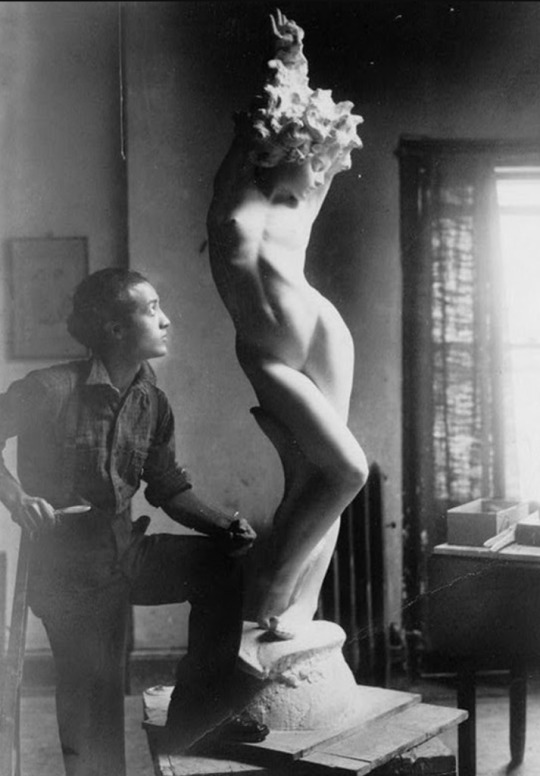
This is the second part of a series on lost landscapes by Stephanie LaCava. Read the first part here.
Stephanie LaCava on Isamu Noguchi, J.M.W. Turner, and Lost Landscapes
A little while ago, I became obsessed with a black and white rendering of playground equipment by sculptor Isamu Noguchi. There were five parts to this drawing, the largest, its foundation, a slim pyramid with a zig zag step rod, three descending tiers of swings. Nearby, a conch-swirl slide, minimalist basketball hoop, seesaw, and rings. Their imagined play with light can be seen in the shadows on the ground. Noguchi named the space Playscapes.
The structure was planned for a park in Hawaii, but realized in Atlanta, Georgia. I always had thought I loved Noguchi, in particular, a photo of him and his Undine sculpture, which I had kept on my desktop and phone. In the image, the young artist is dressed in what looks to be a dungaree jumpsuit. His sleeves are rolled up, tool in hand. He is eye level to the marble bend in his sculpture’s stomach. She’s throwing her hands up, head cast aside. Light comes onto them through a curtained window. It’s an arresting image, but also a false advertisement.
Noguchi worked in such traditional figurative forms like that of Undine until his mid-twenties before moving on to find his signature abstract approach. With this came an avowed commitment to using form and landscape to unite and foster curiosity. His playground designs were created not only as mid-century markers of line and function, but to promote interactive engagement. Here, children could play on the swings or below, in their well-executed shadows. Sadly, the Piedmont Park installation in Atlanta, completed in 1976 was the only one of these playgrounds to be realized in Noguchi’s lifetime. That said, the same childlike spirit is also in the rest of his work.
I thought about taking a road trip to Piedmont Park, except that I already had upcoming plans to go to Detroit, Michigan where there is another of Noguchi’s public works, the Horace E. Dodge Fountain within the Philip A. Hart Plaza, created in the late 70s. While there are many Noguchi sculptures in New York, and an entire museum in Long Island City, I wanted to explore this plaza further from my own home. Noguchi himself grew up in the Midwest, in Indiana. He was born in California and moved to New York as a pre-med student at Columbia University. He would remain there working, though often traveling to projects around the world.
The son of a Japanese father and American mother, Noguchi lived in Japan for part of his childhood before being sent to Indiana...
You have reached your article limit
Sign up for a digital subscription and continue reading all new issues, plus our entire archives, for just $1.50/month.
Already a subscriber? Sign in




